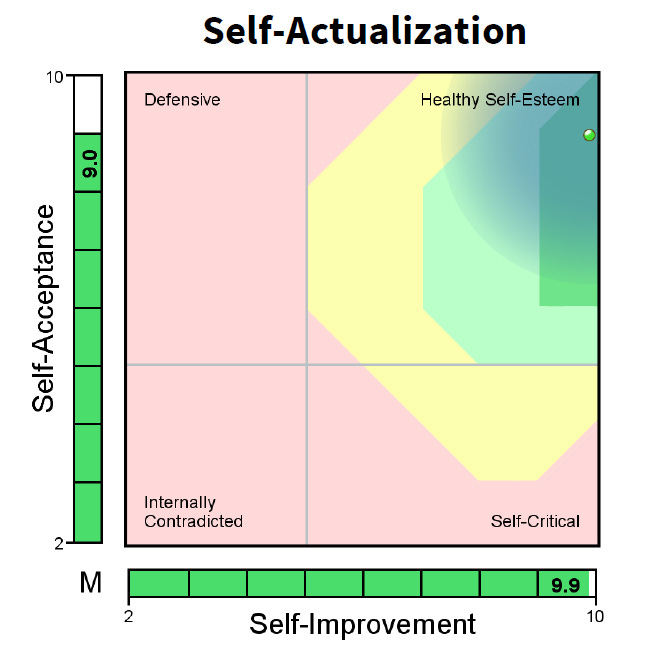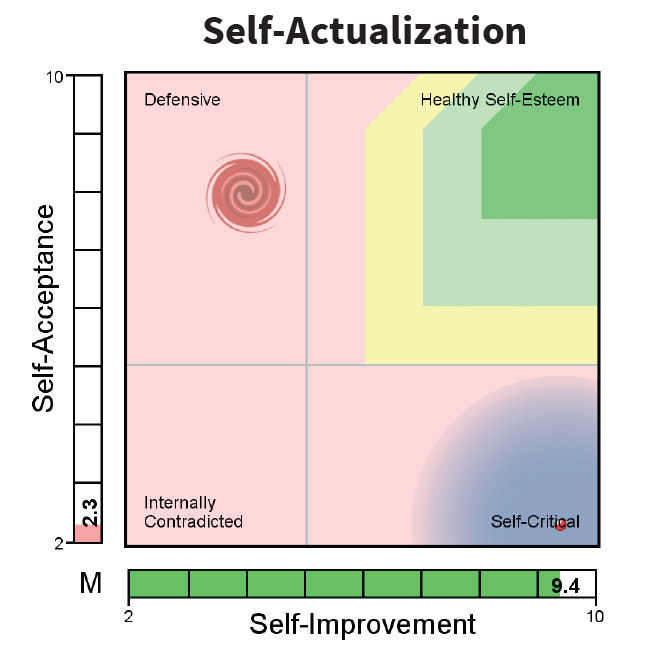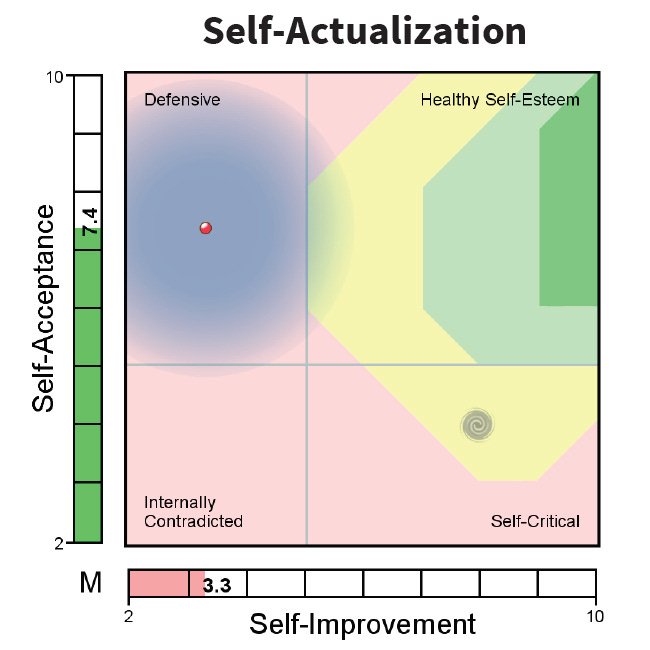Is Your Self-Perception Blocking Your Leadership Impact?
Are You Getting Better TO IMPROVE Yourself, or to PROVE TO Yourself?
There’s a saying: “It doesn’t matter where you begin, only where you end up.” This is true—if you start out by seeing yourself through the right lens.
But if you’re trying to get better as a leader from a faulty mindset, your path forward will always be blocked. When it comes to leadership development, HOW you start makes all the difference.
In This Article:
Being comfortable with yourself as a leader is an asset. So is being driven to improve as a leader. But one without the other means trouble.
Improving yourself without also being content with who you are makes you consistently self-critical.
Being content with who you are without also striving to get better makes you consistently defensive.
Key Application:
Be intentional about being the best possible version of yourself.
There are two big picture truths to grasp in leadership and in developing leadership skills:
Leadership Is a Behavior - Whatever you know (or think you know) about leadership means nothing until it shows up at the level of observable behavior.
All Behavior Is Driven By Thinking - And because most of our thought processes are subconscious or unconscious, most people aren’t aware of their behaviors—much less the thoughts that drive them.
Let’s walk through these, beginning with …
Leadership Is a Behavior
You haven’t mastered a leadership concept until you intentionally put that concept into practice at the behavioral level, where it is observable, measurable and accountable. Otherwise, it’s conceptual only.
If this describes you, your leadership will always be reactive. You cannot and will not be intentional.
I laid this out in a previous article, if you want to explore this further:
Leadership as a behavior has been a long-time focus in my coaching. Early on, my clients embraced the idea but struggled to see in concretely. I needed a way to help them “see” their behaviors in an objective way, so they could fully grasp how it was impacting their leadership.
360-degree assessments were helpful, but highly situational. Many times, those being assessed questioned the validity of the feedback. And those doing the assessing were uncomfortable about providing accurate feedback. Ultimately, these assessments didn’t create insight on what was most needed: Behavior Change.
And you can’t change something you don’t see.
Beyond leadership as a behavior, there’s another, more transformational truth …
Behavior Is Driven By Thinking
All human behavior is driven by (mostly) subconscious or unconscious thought patterns in our brains. Through extensive research over the past few years, I’ve come to understand the role of things like mindset, identity, attention and brain function.1
There’s too much to unpack here, but I can summarize by saying that every single behavior is driven by our thoughts: what we think and how we think.
Not being able to identify actual behaviors is hard enough. And without being able to identify the behavior, there’s no hope of discovering the thinking that’s driving the behavior.
I needed a leadership mirror to use with my clients.
Fortunately, I found something much better …
The Leadership X-Ray
Seven years ago I took the The Harrison Behavioral Assessment as a part of a coaching training class. It turned out to be exactly the tool I was hoping for.
Where most assessments slot you into a category of personality or temperament types that have some general behavior characteristics, the Harrison predicts what we actually, individually do.
The Harrison Assessment is an X-ray because it presents a data-driven, objective picture that exposes both effective behaviors as well as the counter-productive behaviors hiding in our blind spots.
In a coaching engagement, these results allow us to explore the thinking process behind the behaviors. It’s awareness at this level that produces significant and permanent change.
Let’s explore an example …
The Self-Actualization Paradox
One part of the Harrison Assessment is the Paradox Report, which lays out 12 pairs of behaviors that seem to be opposites of each other but actually work in collaboration. This collaborative effect creates a synergistic, higher-order leadership behavior.
One of these paradoxical pairings is called Self-Actualization, which examines these two behaviors:
Self-Improvement - The tendency to attempt to develop or better oneself, and
Self-Acceptance - The tendency to like oneself, or the comfort level with saying “I’m OK the way I am.”
Here’s a graph of how these behaviors work together:
As you can see, when we practice the combination of high Self-Acceptance and high Self-Improvement behaviors, we exhibit healthy self-esteem behaviors. This might show up as confidence, ease, low anxiety, transparency, eagerness to engage and carrying a genuine concern for others even as we inspire to grow ourselves.
Being comfortable with yourself as a leader is an asset. So is being driven to improve as a leader. But one without the other means trouble.
That’s what we’ll see in the next two examples …
High Self-Improvement + Low Self-Acceptance
When we have low Self-Acceptance behaviors, we introduce an out-of-balance dynamic in our behavior set. Take a look at the graph below …
Immediately you can see that working to improve without also being content with yourself makes you consistently self-critical (dot and the gray shaded circle in the lower-right quadrant). In this scenario, nothing you do to improve is ever good enough. You’re improving to cover up for a perceived lack of … something.
The reasons for the perceived lacking are unique to each individual, but the outcomes are usually very similar: pressing to be better than others, not handling failure well, worrying about status and reputation, and frequently getting defensive or justifying when setbacks occur (represented by the “hurricane” symbol in the upper left quadrant). It’s not pretty.
Now, let’s flip the behaviors around and examine …
High Self-Acceptance + Low Self-Improvement
Being content with who you are without also striving to get better makes you consistently defensive. It looks like this:
The leader with this behavior combo is content with themselves and sees no need to improve. So when setbacks occur, it’s obviously someone else’s fault. When called to work harder or put themselves on the line, they can feel unfairly pressured or singled out.
Eventually, as stress levels rise, their defensive posture can turn into a disengaged, ambivalent attitude (indicated by the gray hurricane symbol in the lower right-had quadrant).
Like the previous chart, this behavior weakens a leader’s ability to influence others.
What’s Your Guess?
If you had to guess which of the two out-of-balance paradox patterns is more common, what would you say? Interestingly, one is more frequent than the other. Leave your guess in a comment below and let’s discuss …
So What?
If you’re out of balance in Self-Actualization and you encounter a setback or unforeseen challenge, your leadership is characterized by either beating yourself up or blaming others and deflecting accountability. Think about how this impacts your team …
Do these behaviors increase their trust and confidence in you?
Is this the way you want them to respond when they hit a rough patch?
Do you want them to treat each other—or worse, your customers and business partners—by being either critical or fault-finding?
What kind of environmental culture does this behavior create in your organization?
How do these behaviors impact their eagerness to bring potential problems or solutions to you?
Hopefully, the benefits of leading with a balanced Self-Actualization (without those negative impacts) are obvious. The best possible leadership outcomes happen when purposeful and targeted Self-Improvement supports humble Self-Acceptance—in other words, you work to be a better version of yourself.
It should be noted that these paradoxes don’t eliminate your ability to lead. I’ve seen unbalanced Self-Actualization demonstrated in executives with significant levels of influence and who were reasonably—and in some cases, very—effective. Those leaders leveraged a number of other qualities in their leadership (experience, personality, power, intelligence, persuasion, grit, etc.), in spite of being out of balance in Self-Actualization.
But one has to wonder: What kind of impact did they leave on the table? How much more effective could they have been had they been able to add balanced Self-Actualization on top of their other qualities? How much more fruitful could they have been at developing the emerging leaders on their teams?
The thoughts driving Self-perception and Self-Improvement are some of the most powerful thought processes in our brains. They’re also some of the most poorly managed. How we see ourselves—who we believe ourselves to be (i.e. identity) and how we’re becoming who we want to be—impacts so many of our outward behaviors.
Those leaders who are courageous enough to explore the thinking that drives the low Self-Actualization behaviors will separate themselves from the rest.
Peace be with you …
Interested In Your Own Self-Actualization?
Let’s talk about it! Click the button below to schedule a 15-minute call with me.
Thoughts? Questions?
Let’s hear ‘em! Leave a comment …
These are follow-on developments from resources like Carol Dweck’s Mindset and the research from Martin Seligman and others in the area of positive psychology. Also, we have learned so much about brain function in the last15-20 years—information that blows away long-held assumptions about how and why we behave and think the way we do.








